The History of a Mouthful of Bread, Jean Macé [best autobiographies to read TXT] 📗
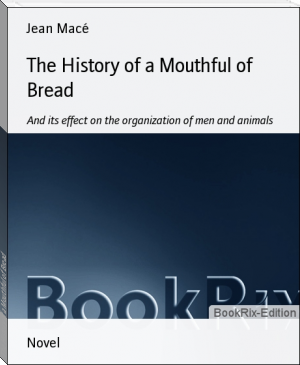
- Author: Jean Macé
Book online «The History of a Mouthful of Bread, Jean Macé [best autobiographies to read TXT] 📗». Author Jean Macé
good earnest, and to some purpose. There is no necessity for hurry; the ruminant has no other business on the face of the earth but this, and thus hour after hour passes away, the food pellets rising one after another to the onslaught of the teeth. Nor do they go back again until they have been reduced by long mastication into an almost liquid paste, which glides through the oesophagus without forcing open the slit, and falls straight into a third pouch, called by old Frenchmen the leaf , on account of certain large folds, some what like the leaves of a book, which line the interior; and known to us as the manyplies . From this stomach, No. 3, this grass-pap passes into a fourth and last bag, which is the real stomach, and where the final work of digestion is accomplished. This fourth pouch also has a pretty little name of the old-fashioned sort, like the three others; it is called the reed or
rennet-bag , from the property it possesses, in the calf, of turning milk into curds: and of his four stomachs this is the only one which the ruminant makes use of at first. As long as the young animal is nursed by its mother, the other compartments remain inactive and small in size; they neither grow nor exercise their functions until it begins to eat grass. Indeed, they would probably entirely disappear, if any one would go to the expense of keeping the animal on milk all its life. If it ceased to have anything to ruminate, nature would certainly lose no time in relieving it of its useless workshop of rumination.
As it is right to give every one his due, I will mention that we owe our accurate knowledge of this simple and ingenious mechanism of
rumination to the labors of Flourens, a scientific Frenchman, who is still alive, and who has made a great many interesting inquiries into the subject we are now considering, i. e. , the life of animals. He is a very clever man into the bargain-so perfect a master of his own language, that the French Academy has felt itself justified in opening its doors to him-an unheard-of honor for a member of the Academy of Sciences. And yet, in spite of all this, I heartily congratulate you that the discovery of the paunch , the cap , the
leaf , and the rennet-bag , was not delayed for his arrival. He is just the man who might have been tempted, in his capacity of profound scholar, to have hunted up for them in the Jardin des racines grecques [Footnote: Your brother can tell you about the Jardin des racines grecques . It is a charming little book, of which every generation of collegians has learnt, by heart, the commencement; but I have never known one, even among the most intrepid, who had ever been to the end of it.], four magnificent names, which would only have bewildered you.
Beyond the rennet-bag there is no change of conformation to note, except that the intestinal tube is naturally much longer than ours, on account of the difference of food: as a general rule, it is ten or twelve times the length of the body. The sheep, who is able to pick up a living in the poorest pastures, is indebted for this inestimable power, which makes him the special blessing of dry and barren countries, to a still further peculiarity of organization; with him the intestinal tube is twenty-eight times the length of the body.
We have seen among the Carnivora , whose jaws have so much work to do, that the condyles of the jawbone are sunk deeply into the fossa of the temporal bone. The ruminant, whose peaceful mouth is formed for contending only with grass, is organized quite differently.
Here the condyle is flattened, and the fossa of the temporal bone very shallow, presenting to the condyle an almost flat surface, so that the jawbone is enabled to revolve with ease for the better mastication of the pellets of grass. This conformation is also to be seen in the
pachydermata who feed upon vegetables. In the horse, especially, whose food is almost the same as that of the ox, the articulation (as this joining of the condyle to the temporal bone is called) of the jaw, is also nearly identical; and it is the same with the teeth, with very trifling variations, those of all ruminants are constructed on the same plan as in the horse. The canines only require a separate notice.
But first I must tell you that, by some special privilege, the reason for which I do not undertake to explain, the order of ruminants is the only one containing animals with horns on their foreheads. Stags, goats, reindeer, chamois, gazelles, roebucks, oxen, buffaloes, all the beasts with horned foreheads, belong to the ruminants. Indeed, this fact would form a very convenient mark of distinction between them and other animals, were there not exceptions to it. Some ruminants have no horns; and then, as if in compensation for the deficiency, we find them provided with canines in the upper jaw, in addition to those below.
The ruminant which has the most beautiful canines is the musk-deer, a pretty little animal inhabiting the highlands of Central Asia, like the chamois of the Alps. But now that you know who he is, you will probably often be tempted to wish he had never existed; for it is from a small pouch below his belly that people obtain that odious musk of which Oriental beauties are so fond, and which even certain strong-nerved ladies of our own country are guilty of using in public, to the great detriment of general health. But enough of this; our business is with the canines of the musk-deer. They project with a descending curve from the upper jaw, and would give the animal the very false appearance of a small wild boar, but for the great delicacy of its legs, which are more slender than even those of our roebuck, to whom, with the exception of the horns, it bears a close resemblance, as its name implies.
After the musk-deer comes the large family of camels and llamas, which represent-the former in Asia and Africa, the latter in America-the irregular groups of ruminants which have canines instead of horns, and which seem to be placed as intermediates between true ruminants and the pachydermata. They form the connecting link between the horse and the ox, and men prefer employing them as beasts of burden to using them as butcher's meat; though one could eat them in their own country with less disgust than Europeans feel in making a meal of horseflesh; so that they might be a very acceptable resource in many cases. The real fact is, that ruminants with horns and without upper canines have more delicate flesh than the others, and seem more especially destined to be eaten. Yet if one had only to look at the stomach, which is, after all, the distinctive characteristic of the order, camels and llamas would stand in the first rank as ruminants. Besides the usual character of four stomachs, their paunch and honeycomb-bag are furnished with large cells which act as reservoirs, and fill with water whenever the animal has the chance of drinking freely, and from whence in time of drought he draws it up into his mouth and swallows it. This is what makes the camel so valuable to the wandering tribes in the great deserts of Africa and Asia. He is the only animal who can pass several days under the burning sun of Sahara without drinking-or rather without appearing to do so-for he carries his provision of water concealed from all eyes in the recesses of his body. I dare say you have often heard stories of Arabs dying of thirst who have opened the stomachs of their camels in search of a last draught of water. It must be a terrible thirst to drive a man to such an extremity; for, as you may imagine, one could not expect the water there to be either fresh or clear, to say nothing of the great risk there would generally be of finding the reservoir empty. Such an extreme is never resorted to till water has failed for a long time, and all the goatskin bottles have been emptied; and in such a ease it is but too likely that the camel has followed his master's example, and emptied his water-skins for his own use. But this is only half the internal fittings of the "ship of the desert," as the Arabs call him. In the desert it is often as difficult to find food as water; and nature has equally provided for this. The hump you see rising upon the camel's back in your picture-books is his safeguard against starvation. It is a huge mass of fat. I need say no more. You will remember Mr. Liebeg's pig, which lived 160 days upon its own bacon. Without going quite such lengths as that, the camel can keep up his fire for a long time upon the fuel which the blood obtains from this blessed hump. Since we are talking of this animal, and he takes a remarkable place in a history of nutrition, I ought to tell you that camels are classed into two families by their hump: there is the camel, properly so called, which has two humps, and the dromedary, which has but one. This latter did not require such a supply of provisions as the other, for he is very much swifter of foot, and consequently his journeys are more speedily performed.
I have nothing particular to say to you about the other ruminants, in the matter of their organs of nutrition; but I will not quit the subject without reminding you of one thing which concerns nutrition, not theirs, however, but ours. It was by the taming of the domestic ruminants-that unfailing dinner-material which now follows everywhere at the heels of his master-that human civilisation began. Before that event, man, driven to depend for his living upon the hazards of the chase, spent his whole time in seeking for food, and had none to spare for the pursuit of any other branch of industry.
Far as we may ascend in the history of ages we shall find shepherd races. Beyond them there is no history at all, nor could there be. The first leisure hours of man, and, consequently, his first efforts in art and literature, date from the period when the ruminant animals, those special fabricators of nutritive aliments, were gathered around mankind, and worked out their destiny under the shadow of his tent, by his direction, and for his benefit. But all this is so distant from us now, that it is scarcely worth the trouble of thinking about. The human race is somewhat like those old people who have lost all recollection of their childhood; and young people are not required to know what their elders have forgotten. It is well, however, that they should not be quite ignorant on the subject. When you hear that the Society for the Prevention of Cruelty to Animals has taken up the cause of some barbarously-used ox or sheep, do not turn it into ridicule. Those humble species have supported ours from the first; and you should recollect, now and then, that human society made its first step forward when it began to keep flocks and herds.
LETTER XXXIII.
MAMMALIA- continued .
We come now to animals less familiar to you, and none of which inhabit Europe. We shall therefore pass more quickly over them.
ORDER 9. Marsupialia (pouched) .
rennet-bag , from the property it possesses, in the calf, of turning milk into curds: and of his four stomachs this is the only one which the ruminant makes use of at first. As long as the young animal is nursed by its mother, the other compartments remain inactive and small in size; they neither grow nor exercise their functions until it begins to eat grass. Indeed, they would probably entirely disappear, if any one would go to the expense of keeping the animal on milk all its life. If it ceased to have anything to ruminate, nature would certainly lose no time in relieving it of its useless workshop of rumination.
As it is right to give every one his due, I will mention that we owe our accurate knowledge of this simple and ingenious mechanism of
rumination to the labors of Flourens, a scientific Frenchman, who is still alive, and who has made a great many interesting inquiries into the subject we are now considering, i. e. , the life of animals. He is a very clever man into the bargain-so perfect a master of his own language, that the French Academy has felt itself justified in opening its doors to him-an unheard-of honor for a member of the Academy of Sciences. And yet, in spite of all this, I heartily congratulate you that the discovery of the paunch , the cap , the
leaf , and the rennet-bag , was not delayed for his arrival. He is just the man who might have been tempted, in his capacity of profound scholar, to have hunted up for them in the Jardin des racines grecques [Footnote: Your brother can tell you about the Jardin des racines grecques . It is a charming little book, of which every generation of collegians has learnt, by heart, the commencement; but I have never known one, even among the most intrepid, who had ever been to the end of it.], four magnificent names, which would only have bewildered you.
Beyond the rennet-bag there is no change of conformation to note, except that the intestinal tube is naturally much longer than ours, on account of the difference of food: as a general rule, it is ten or twelve times the length of the body. The sheep, who is able to pick up a living in the poorest pastures, is indebted for this inestimable power, which makes him the special blessing of dry and barren countries, to a still further peculiarity of organization; with him the intestinal tube is twenty-eight times the length of the body.
We have seen among the Carnivora , whose jaws have so much work to do, that the condyles of the jawbone are sunk deeply into the fossa of the temporal bone. The ruminant, whose peaceful mouth is formed for contending only with grass, is organized quite differently.
Here the condyle is flattened, and the fossa of the temporal bone very shallow, presenting to the condyle an almost flat surface, so that the jawbone is enabled to revolve with ease for the better mastication of the pellets of grass. This conformation is also to be seen in the
pachydermata who feed upon vegetables. In the horse, especially, whose food is almost the same as that of the ox, the articulation (as this joining of the condyle to the temporal bone is called) of the jaw, is also nearly identical; and it is the same with the teeth, with very trifling variations, those of all ruminants are constructed on the same plan as in the horse. The canines only require a separate notice.
But first I must tell you that, by some special privilege, the reason for which I do not undertake to explain, the order of ruminants is the only one containing animals with horns on their foreheads. Stags, goats, reindeer, chamois, gazelles, roebucks, oxen, buffaloes, all the beasts with horned foreheads, belong to the ruminants. Indeed, this fact would form a very convenient mark of distinction between them and other animals, were there not exceptions to it. Some ruminants have no horns; and then, as if in compensation for the deficiency, we find them provided with canines in the upper jaw, in addition to those below.
The ruminant which has the most beautiful canines is the musk-deer, a pretty little animal inhabiting the highlands of Central Asia, like the chamois of the Alps. But now that you know who he is, you will probably often be tempted to wish he had never existed; for it is from a small pouch below his belly that people obtain that odious musk of which Oriental beauties are so fond, and which even certain strong-nerved ladies of our own country are guilty of using in public, to the great detriment of general health. But enough of this; our business is with the canines of the musk-deer. They project with a descending curve from the upper jaw, and would give the animal the very false appearance of a small wild boar, but for the great delicacy of its legs, which are more slender than even those of our roebuck, to whom, with the exception of the horns, it bears a close resemblance, as its name implies.
After the musk-deer comes the large family of camels and llamas, which represent-the former in Asia and Africa, the latter in America-the irregular groups of ruminants which have canines instead of horns, and which seem to be placed as intermediates between true ruminants and the pachydermata. They form the connecting link between the horse and the ox, and men prefer employing them as beasts of burden to using them as butcher's meat; though one could eat them in their own country with less disgust than Europeans feel in making a meal of horseflesh; so that they might be a very acceptable resource in many cases. The real fact is, that ruminants with horns and without upper canines have more delicate flesh than the others, and seem more especially destined to be eaten. Yet if one had only to look at the stomach, which is, after all, the distinctive characteristic of the order, camels and llamas would stand in the first rank as ruminants. Besides the usual character of four stomachs, their paunch and honeycomb-bag are furnished with large cells which act as reservoirs, and fill with water whenever the animal has the chance of drinking freely, and from whence in time of drought he draws it up into his mouth and swallows it. This is what makes the camel so valuable to the wandering tribes in the great deserts of Africa and Asia. He is the only animal who can pass several days under the burning sun of Sahara without drinking-or rather without appearing to do so-for he carries his provision of water concealed from all eyes in the recesses of his body. I dare say you have often heard stories of Arabs dying of thirst who have opened the stomachs of their camels in search of a last draught of water. It must be a terrible thirst to drive a man to such an extremity; for, as you may imagine, one could not expect the water there to be either fresh or clear, to say nothing of the great risk there would generally be of finding the reservoir empty. Such an extreme is never resorted to till water has failed for a long time, and all the goatskin bottles have been emptied; and in such a ease it is but too likely that the camel has followed his master's example, and emptied his water-skins for his own use. But this is only half the internal fittings of the "ship of the desert," as the Arabs call him. In the desert it is often as difficult to find food as water; and nature has equally provided for this. The hump you see rising upon the camel's back in your picture-books is his safeguard against starvation. It is a huge mass of fat. I need say no more. You will remember Mr. Liebeg's pig, which lived 160 days upon its own bacon. Without going quite such lengths as that, the camel can keep up his fire for a long time upon the fuel which the blood obtains from this blessed hump. Since we are talking of this animal, and he takes a remarkable place in a history of nutrition, I ought to tell you that camels are classed into two families by their hump: there is the camel, properly so called, which has two humps, and the dromedary, which has but one. This latter did not require such a supply of provisions as the other, for he is very much swifter of foot, and consequently his journeys are more speedily performed.
I have nothing particular to say to you about the other ruminants, in the matter of their organs of nutrition; but I will not quit the subject without reminding you of one thing which concerns nutrition, not theirs, however, but ours. It was by the taming of the domestic ruminants-that unfailing dinner-material which now follows everywhere at the heels of his master-that human civilisation began. Before that event, man, driven to depend for his living upon the hazards of the chase, spent his whole time in seeking for food, and had none to spare for the pursuit of any other branch of industry.
Far as we may ascend in the history of ages we shall find shepherd races. Beyond them there is no history at all, nor could there be. The first leisure hours of man, and, consequently, his first efforts in art and literature, date from the period when the ruminant animals, those special fabricators of nutritive aliments, were gathered around mankind, and worked out their destiny under the shadow of his tent, by his direction, and for his benefit. But all this is so distant from us now, that it is scarcely worth the trouble of thinking about. The human race is somewhat like those old people who have lost all recollection of their childhood; and young people are not required to know what their elders have forgotten. It is well, however, that they should not be quite ignorant on the subject. When you hear that the Society for the Prevention of Cruelty to Animals has taken up the cause of some barbarously-used ox or sheep, do not turn it into ridicule. Those humble species have supported ours from the first; and you should recollect, now and then, that human society made its first step forward when it began to keep flocks and herds.
LETTER XXXIII.
MAMMALIA- continued .
We come now to animals less familiar to you, and none of which inhabit Europe. We shall therefore pass more quickly over them.
ORDER 9. Marsupialia (pouched) .
Free e-book «The History of a Mouthful of Bread, Jean Macé [best autobiographies to read TXT] 📗» - read online now
Similar e-books:
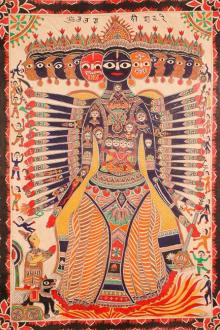
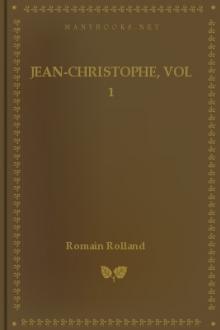
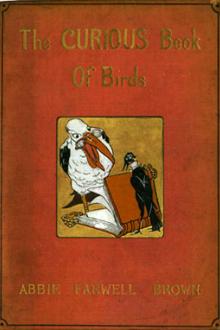

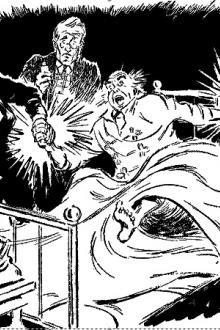
Comments (0)